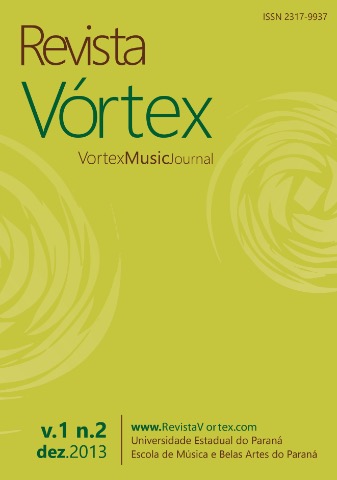Reimagining a Riemannian symbology for the structural harmonic analysis of 19th-century tonal music.
DOI:
https://doi.org/10.33871/23179937.2013.1.2.428Resumo
In the context of a preview of central topics taken from a larger research work, this article presents and explains a proposition of a functional analytical symbology which is currently being developed as a tool for the structural harmonic analysis of tonal music. This symbology constitutes a key component for a proposal of an analytical methodology for 19th"‘century extended tonality, which is the core of the aforementioned larger research work. Based on a critical revision of the history of music theory and analysis, this methodology is mainly the result of the recasting and the amplification of thoughts and concepts developed by 19th"‘century theorists such as Hugo Riemann and Arthur von Oettingen. The article introduces the proposed analytical symbology through a comparison to its historical counterparts, and it also highlights the ability of the proposed symbols to graph the harmonic language of 19th"‘century extended tonality by means of a few analytical examples.Downloads
Não há dados estatísticos.
Downloads
Publicado
30.12.2013
Como Citar
Bittencourt, M. A. (2013). Reimagining a Riemannian symbology for the structural harmonic analysis of 19th-century tonal music. Revista Vórtex, 1(2), 30–48. https://doi.org/10.33871/23179937.2013.1.2.428
Edição
Seção
Artigos
Licença
Copyright (c) 2013 Marcus Alessi Bittencourt

Este trabalho está licenciado sob uma licença Creative Commons Attribution 4.0 International License.
Autores mantêm os direitos autorais e concedem à revista o direito de primeira publicação, com o trabalho simultaneamente licenciado sob a Licença Creative Commons Attribution que permite o compartilhamento do trabalho com reconhecimento da autoria e publicação inicial nesta revista.






